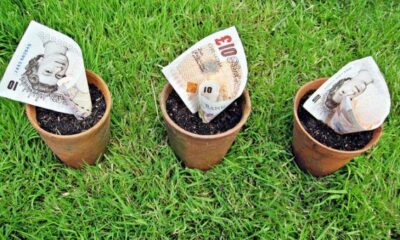

Features
Lies, damned lies and sustainability reports
Ty Lee, senior analyst at WHEB Asset Management, delves into the troublesome world of corporate sustainability reporting, and explains why we must crack the chicken-and-egg problem between companies and investors.
How much is 122 billion tonnes of carbon dioxide? If you think it sounds like a lot, you’d be right – it is more than four times the entire planet’s production of CO2 in 2009.
It is also the amount that Italian energy utility Enel reported that it produced in 2009. As the researcher who uncovered this pointed out, any credible attempt to combat global warming will clearly have to start in Italy.
This is though just one example of the widespread misreporting of data in sustainability reports over the last few years presented by researchers at a seminar focused on the integration of sustainability into investment processes last year.
One of the presenters, Dr Ralf Barkemeyer (Leeds University) and his team have been working with corporate sustainability data for more than 10 years. His findings were particularly shocking, showing the poor quality of reporting even among industry-leading companies.
ABB, a multiple reporting award-winner, was found to have overstated its sulphur oxide emissions by a factor of 1,000 for seven years in a row (many of its awards were won during this period); Ford Motor Company managed to simultaneously halve and double its water consumption – all in the same year (2006).
What perhaps was even more shocking was that no one spotted these eye-catching errors for such a long time. Amazingly, it was found that around six out of 10 large European companies reported incomplete CO2 emission information.
There are various reasons why the quality of sustainability information is so poor when compared with financial data.
One reason is that there is still only relatively limited usage or monitoring of data from stakeholders, including shareholders, investors and analysts. This also resonates with the comments from the discussion panel at the seminar that buy-side analysts generally do not take sustainability information seriously.
Hence, there is a chicken-and-egg problem perfectly summarised by two questions during the presentation: “Why should companies produce high-quality reports if their stakeholders do not really process the information provided?” and “Why should stakeholders read sustainability reports that are fundamentally flawed?”
On top of that, it is generally difficult to interpret and compare sustainability data as they are reported in different definitions and metrics. Moreover, the media interest surrounding ClientEarth’s successful challenge to the Financial Reporting Review Panel over Rio Tinto’s 2008 report and accounts, underlined just how rare it is for companies to be held to account for poor quality reporting.
To be fair to the reporting companies, most of them are still on a learning curve of reporting sustainability information and are trying to put the systems and controls in place. Encouragingly, both the presenters and our team have observed meaningful improvements in the quality of the sustainability information in terms of comprehensiveness and standardisation over the past few years.
Setting aside the quality issue, the next question is whether there is value in sustainability reports and how analysts can extract value from them.
Professor Frank Figge (Euromed Marseille) provided an answer by suggesting a value-oriented way of analysing sustainability information. Instead of looking at environmental, social and governance (ESG) data on a standalone basis, they are linked to financial performance such as measuring earnings before interest and tax per ton of CO2 emission, so that ESG performance can be presented in monetary terms and compared against the peers.
Certainly there is more work to be done to improve analysts’ tools to fully appreciate the value of sustainability information but I think it is a good starting point.
Dr Tommy Lundgren from the Centre for Environmental and Resource Economics in Sweden provided further evidence in his study which supported the idea that there is a positive relationship between environmental performance and financial performance, in line with numerous similar studies.
What do all these findings mean for WHEB’s integrated investment process? First of all, it is good to learn that more and more studies suggest that there are positive relationships between ESG factors and financial performance, which further validates our integrated investment process. On the other hand, with the poor quality issue in mind, we have to scrutinise the sustainability data vigilantly when we use them.
In the longer term, we should aim to improve the information quality through our communications and engagements with companies with the hope of cracking the chicken-and-egg problem between companies and stakeholders.
Ty Lee is a senior analyst at WHEB Asset Management. This article originally appeared on WHEB’s blog.
Further reading:
Has CSR reached its sell-by date? Part 1
Has CSR reached its sell-by date? Part 2
We shouldn’t treat corporations and investors like children
Sustainability in the workplace reflects on employees’ personal choices, says study


 Environment10 months ago
Environment10 months agoAre Polymer Banknotes: an Eco-Friendly Trend or a Groundswell?

 Environment12 months ago
Environment12 months agoEco-Friendly Home Improvements: Top 7 Upgrades for 2025

 Features9 months ago
Features9 months agoEco-Friendly Cryptocurrencies: Sustainable Investment Choices

 Features10 months ago
Features10 months agoEco-Friendly Crypto Traders Must Find the Right Exchange

























